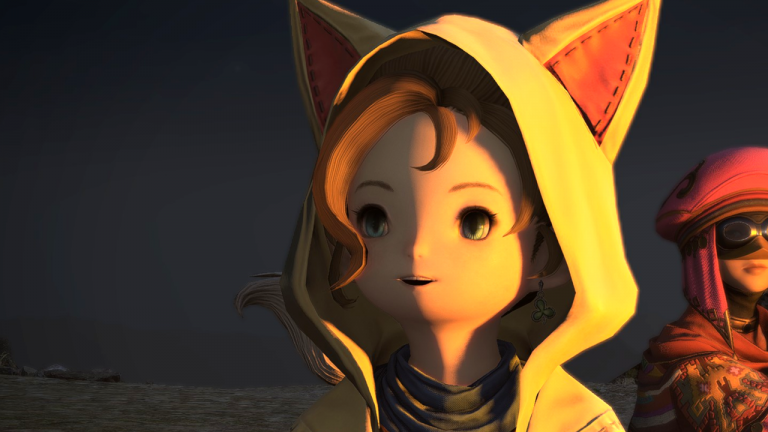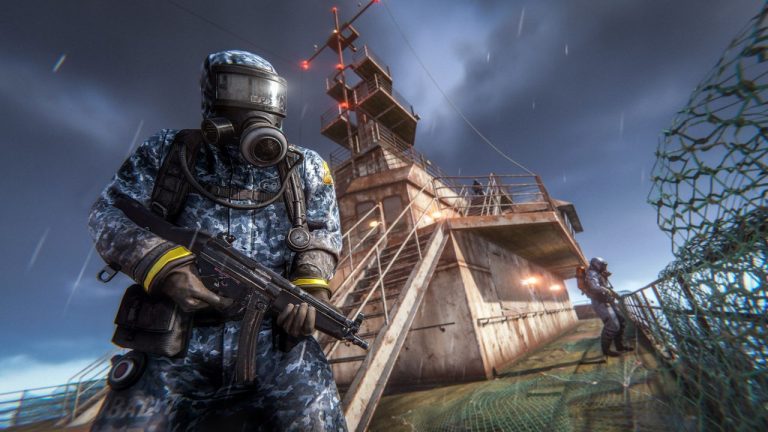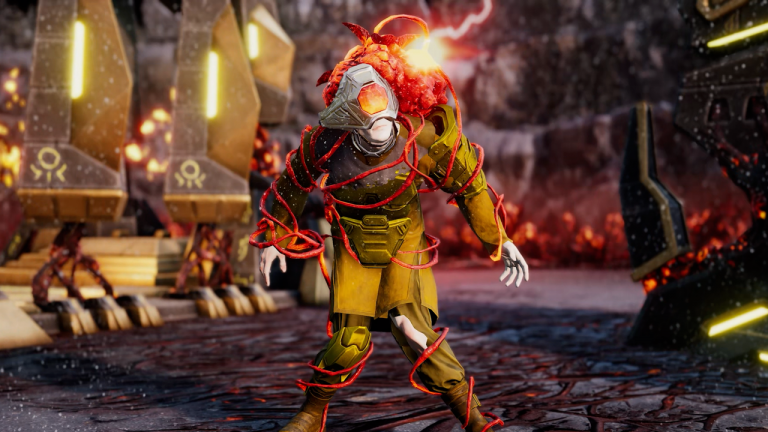The whole idea of Jump Ship, an upcoming space game I was able to play briefly back at GDC, is very appealing to me: Four players work together to guide a spaceship through a series of hostile environments, taking turns piloting, manning guns, putting out fires, and sometimes jetpacking down to alien landscapes together to pick up supplies and shoot robots, or whatever happens to be shooting back.
It’s the on-ship stuff that excites me most. If videogames pursued nothing but fulfilling the fantasy of crewing a spaceship—of feeling like you’re really doing whatever it is sci-fi engineers are doing when they say “rerouting power”—I’d be fine with that.
Sea of Thieves does the low-tech version of this brilliantly by abstracting relatively little about sailing a ship, making players raise and lower individual sails and fight fires by filling buckets with seawater and running to the flames to douse them. Everything feels “manual”—without becoming QWOP or requiring a VR headset—and Jump Ship obeys the same philosophy.
One clever way it physicalizes something that could’ve been abstract is found in its equivalent of sails, the ship’s power management system. Engines, weapons, and other systems are powered by arranging physical blocks on a grid on one of the walls. The shape of the powered portion of the grid depends on your ship’s power output, and optimal arrangements will take some puzzling out.
Parts of the grid can be disabled when your ship is damaged, too, such that “rerouting power to weapons!” is something you might genuinely exclaim over Discord as you scramble to the engineering bay to reorganize the board. That’s the kind of intrinsic roleplaying I love to see games strive for.
(Image credit: Keepsake Games)
And as unlikely as it is that big red fire extinguishers would be the first line of defense against blazes on an interstellar spaceship, they’re another way that Jump Ship demands direct, manual problem resolution. I like that the anachronistic extinguishers aren’t inventory items, but heavy objects that have to be found around the ship and carried to fires. They stay wherever you set them down, too, so if you want to troll your friends by hiding them, you can. (Love ’em or hate ’em, a co-op group isn’t complete without that player.)
Fly away
You can definitely get up to some shenanigans in Jump Ship. Standing on a moving vehicle while another player pilots it has been one of my favorite videogame pastimes for over two decades now, going all the way back to standing on the wings of airborne B-17s in Battlefield 1942, so I was delighted to find that I could wander out of the airlock and clomp around on our ship’s hull while another player did their best Han Solo maneuvers. You can become a human turret and shoot at enemy ships with handheld weapons, too. (If you wanna be really annoying, say “assimilate this” before each shot.)
(Image credit: Keepsake Games)
One place where Jump Ship diverges from Sea of Thieves is how forgiving it is about personal spatial mishaps. If you also accidentally leap off of a moving ship, like I did, it’s no big deal: Holding down a recall button returns you to the ship, and you have an Iron Man jetpack with no cooldown or fuel gauge. I flew practically from a planet into outer space testing its limits, which are the boundaries of the level.
They contain randomized elements, but the levels in Jump Ship are hand-made, so they don’t go on forever, and you won’t be seamlessly flying from space to planet surfaces. Keepsake co-founder Filip Coulianos was previously a level designer at Hazelight (It Takes Two, A Way Out), and it’s a discipline that remains dear to his heart.
“One downside of doing everything procedurally is that you might end up as a player flying for ten minutes, and nothing happening,” Coulianos told me, “and we want to compress everything interesting into one space.”
(Image credit: Keepsake Games)
Faster than light
One of the smartest aspects of Jump Ship, I think, is its FTL-style structure. Sessions are split up into a series of encounters on those hand-made maps, where you might have to fly through an asteroid field or invade a planetside base on foot. When you’ve completed an encounter, you and your crew collect your reward and pick the next one to jump to.
If a player dies during an encounter, they can respawn, but the ship takes damage when they do. It’s a contrivance even greater than the existence of big red fire extinguishers, but it’s clever. It makes death consequential, but means that no one has to sit around spectating until the other players find a way to revive them, like in Left 4 Dead.
(Image credit: Keepsake Games)
The ship is the crew’s collective health bar. Your goal is to maintain the integrity of its hull through to the final node of a given adventure, which may mean forgoing branches with the best loot in favor of low-risk encounters that promise repair kits. Along the way and in a hangar between adventures, you’ll be able to upgrade your ship with new equipment.
“I used to refer to the ship as being our ‘collective Diablo character,'” Coulianos said. “It’s a great equalizer, because let’s say I’ve been playing for 50 hours, and I want to invite you to play, and you’ve never played before. It doesn’t really matter if you never played, because the ship is what’s evolving, and we can play with my super advanced ship, and it’s fine.”
The developers are still debating how much and what kinds of ship customization to offer. I think people will want to go full on Sims with it, carefully placing potted alien plants on their bridge, but we’ll see if the small dev team gets that granular. On top of ship combat, they have a whole third-person shooting ground game to produce.
(Image credit: Keepsake Games)
Ground game
The robots I fought planetside were somewhat mundane, but the full planned enemy and weapon variety wasn’t in the build I was trying out. I was discouraged from using a giant, very enticing railgun I found since its animations weren’t finished, but it was a promising discovery.
There will be “a bunch of different activities” to encounter, too, and they won’t all be about shooting waves of robots. One example given was transporting a radioactive item that damages whoever’s holding it, or the ship itself, if you bring it aboard. The developer has also mentioned chasing bounties and surviving solar flares.
(Image credit: Keepsake Games)
There’s no PvP planned, and as much as I love stowing away on other players’ ships in Sea of Thieves, focusing purely on co-op (solo play will be possible, too) might let Jump Ship be more playful with its activities, enemies, and weapons than it otherwise would’ve been.
I don’t want to put overbearing expectations on this small team—it’s around 12 people who work “in a basement in Stockholm”—but there’s a real opportunity to do some Helldivers 2-style storytelling here. Since Jump Ship’s sessions are built out of short encounters, you can imagine Keepsake stealthily dropping in new encounter types, enemies, and weapons as surprises. Coulianos can imagine it, too.
“It’s so easy for us to make an update where, magically, a new type of gameplay kind of just emerges, and you don’t even have to know about it,” he said. “You just go, ‘I think we’re gonna make a jump. Whoa, haven’t seen this before. Now we have slime planets with tentacles or something?'”
To be clear, slime planets with tentacles are not confirmed—that was a hypothetical example. But maybe? Keepsake Games plans to release Jump Ship in early access sometime this year, and will use player feedback to inform its focus. It’s got a Steam page now.












